Aktau is a city in the far western reaches of Kazakhstan, a long, long way from anything else. It is on the coast and is where our ship would have docked, had we been able to stick to our original plan of crossing the Caspian Sea, so it was an obvious place to pick up our overland route and begin our Central Asian adventure. We landed right in the middle of the night and finally got to bed at about 5.30am – we are way too old for this kind of thing! We’d chosen to stay in our first proper international hotel of our trip and it was a real treat to have a couple of days of predictably bland decor, breakfast buffets and American-style customer service. Obviously, the novelty of this would have worn off very quickly but we enjoyed it while it lasted!

After a very long sleep to recover from our night time adventures, we ventured out just before dusk to walk along the coast and see the statues and monuments that are an essential part of every Soviet-era city.



I loved these huge murals on the side of the apartment blocks. Elsewhere in the city there are more that depict Kazakh “national fathers”, but these ones were much more visually interesting.
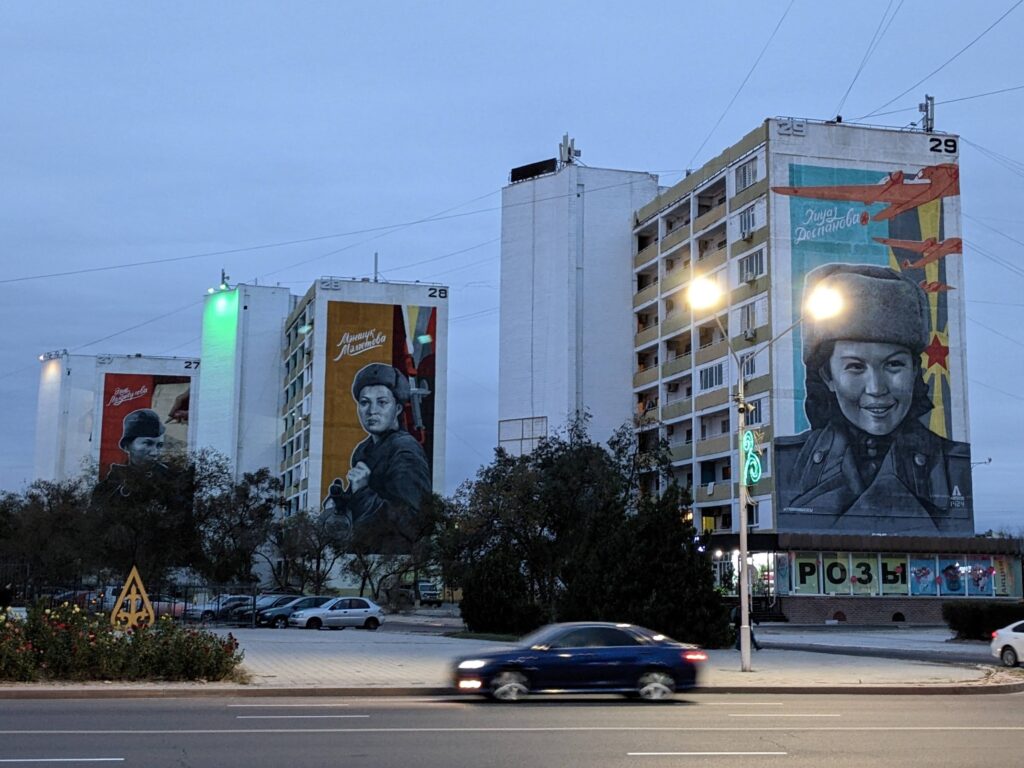
Aktau’s main reasons for existence are uranium, oil and gas, and there’s not a lot in the way of tourist sites (other than its beach, which was a bit bleak at this time of year – I’d be curious to know how different the atmosphere is in the summer).



However, we did read about Koshkar Ata, a necropolis in a village in the desert not too far outside the city, so we decided to check it out. The below is what we could see from Google satellite view when planning our excursion – it covered a huge area and certainly piqued our interest!


We had to take a taxi (there’s not a lot of public transport in the desert) and our driver was incredulous that we wanted to visit an area that he said was just a couple of graves with nothing to see. I think the chap at the hotel reception thought the same but hid it rather better (IHG service standards, after all)! If anything, this made us want to visit even more. I love this about travel – things differ so much across the world that one person’s boring graveyard is another person’s exciting expedition.
When we arrived, it didn’t disappoint. The necropolis stretched further than we could see and was filled with endless sand-coloured mausoleums of all shapes and sizes. It was like a miniature city (which makes sense really, given that necropolis literally translates as city of the dead).
We were interested to discover that in the vast majority of mausoleums, even when the exterior was large and ornate, the interior contained a very simple grave marked by a pile of earth and plain headstones and footstones.
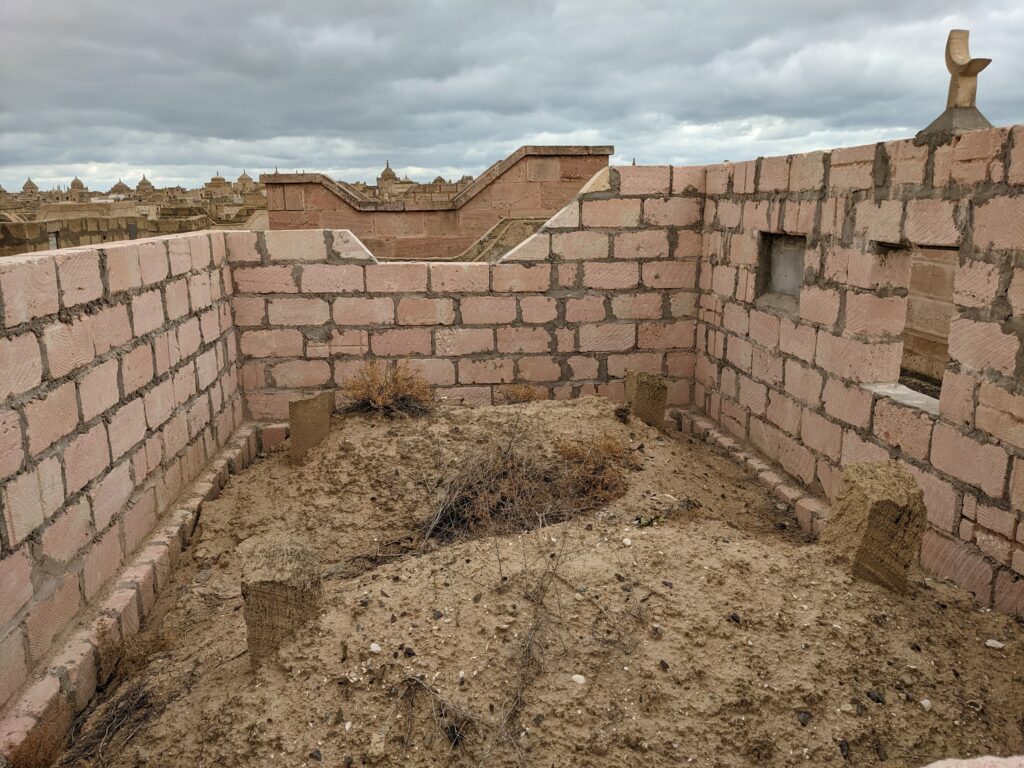
Of the hundreds we saw, the below was the only one that had a highly decorated interior. The exterior wasn’t more grand than others – just somehow different, but sadly we could only speculate as to why.


Overall, we liked Aktau way more than we expected and probably more than was justified – it somehow felt both very modern but also right at the end of the road. It was definitely an interesting place to spend a couple of days and we ate some decent food while we were there (including at yet another Georgian restaurant – I think we have problem).
Our next move was into Uzbekistan by train (we’ll return to Kazakhstan later), and so we headed to the station to begin a marathon 26-hour journey. We boarded at about 15.30 and got settled in our second class compartment, and the train departed as scheduled at 16.18 on the dot.


We’d read that the best strategy was to try to sleep straight away, and so we followed the lead of our compartment buddies who made up their beds soon after they boarded. Admittedly, it was a rather early night, but this was important for later! We woke up to have a Big Bon Max (pot noodle) each for dinner, filling them from the samovar at the end of the carriage, and then went back to sleep until we arrived at Beyneu around midnight.
We managed to snag seats in a crowded waiting room, and Oli went off to buy some much-needed chocolate bars and more Big Bons (sadly not Big Bon Max this time – perhaps their tagline could be, “Just as uninspiring, but in a smaller package”) for lunch the next day. He reported back that there was a proper party atmosphere on the platform, with music and dancing, but when I went out to investigate there was nothing happening so I assume he was just delirious…
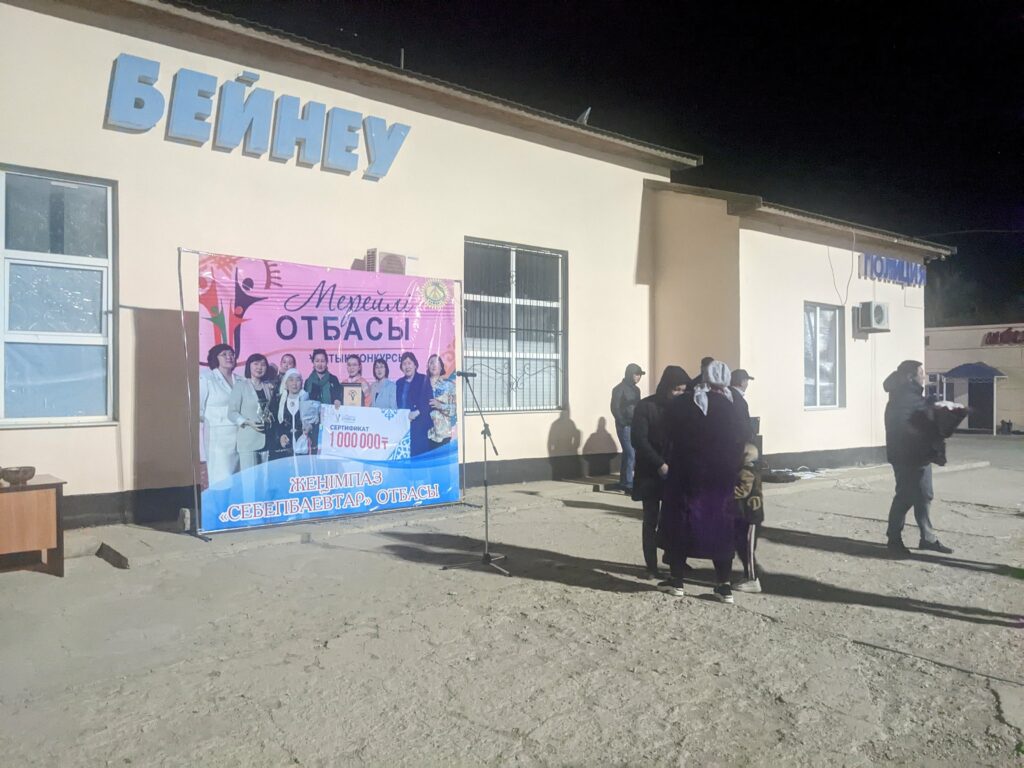
Eventually, we boarded our second train, which would cross the border into Uzbekistan and then head towards Nukus, a city in the Republic of Karakalpakstan in the remote west of the country. The border formalities started almost immediately and continued until it was light outside, when we could finally settle down to get some sleep. This was a bit tricky as we were in the open sleepers of third class, and there was near-constant chaos. The ladies seated next to us were in hysterical giggles almost the whole way and it was pretty infectious so it wasn’t all misery, though. When it was my turn to speak to the border guard at the end of the carriage, they took great delight in conducting their own interrogation of Oli about our relationship and broke out into more giggles when they found out we were a couple. When I returned, they didn’t want to speak to me – they’d already got all the goss they needed from Oli!


Our second class compartment on the Aktau – Beyneu train had had probably the comfiest beds we’ve ever had on a train, and this only served as a reminder of quite how big a difference there was between second and third class! Our new beds were much smaller and lumpier (and most sad of all, much grubbier), and Oli’s feet kept poking out into the aisle, ready to be bumped by the incessant stream of people wandering up and down the train. These included three little girls in adorable matching pyjamas and two ladies who had boarded shortly after the border and were selling clothes and toys on the train. They chose our compartment to store (and regularly unpack and re-pack) their wares, and at one point I woke to find they were keeping things on my feet as I slept!



We spent basically the entire 15 hours baffled at what was going on around us, but it did serve as excellent entertainment as we rolled past mile after mile of dry, featureless desert.

Eventually, at around 18.00 on the day after we set off, we drew into Nukus, described promisingly by the Lonely Planet as, “one of Uzbekistan’s least appealing cities”. We were ready, as they put it, to sample the “general sense of hopelessness and desolation”. Lovely!
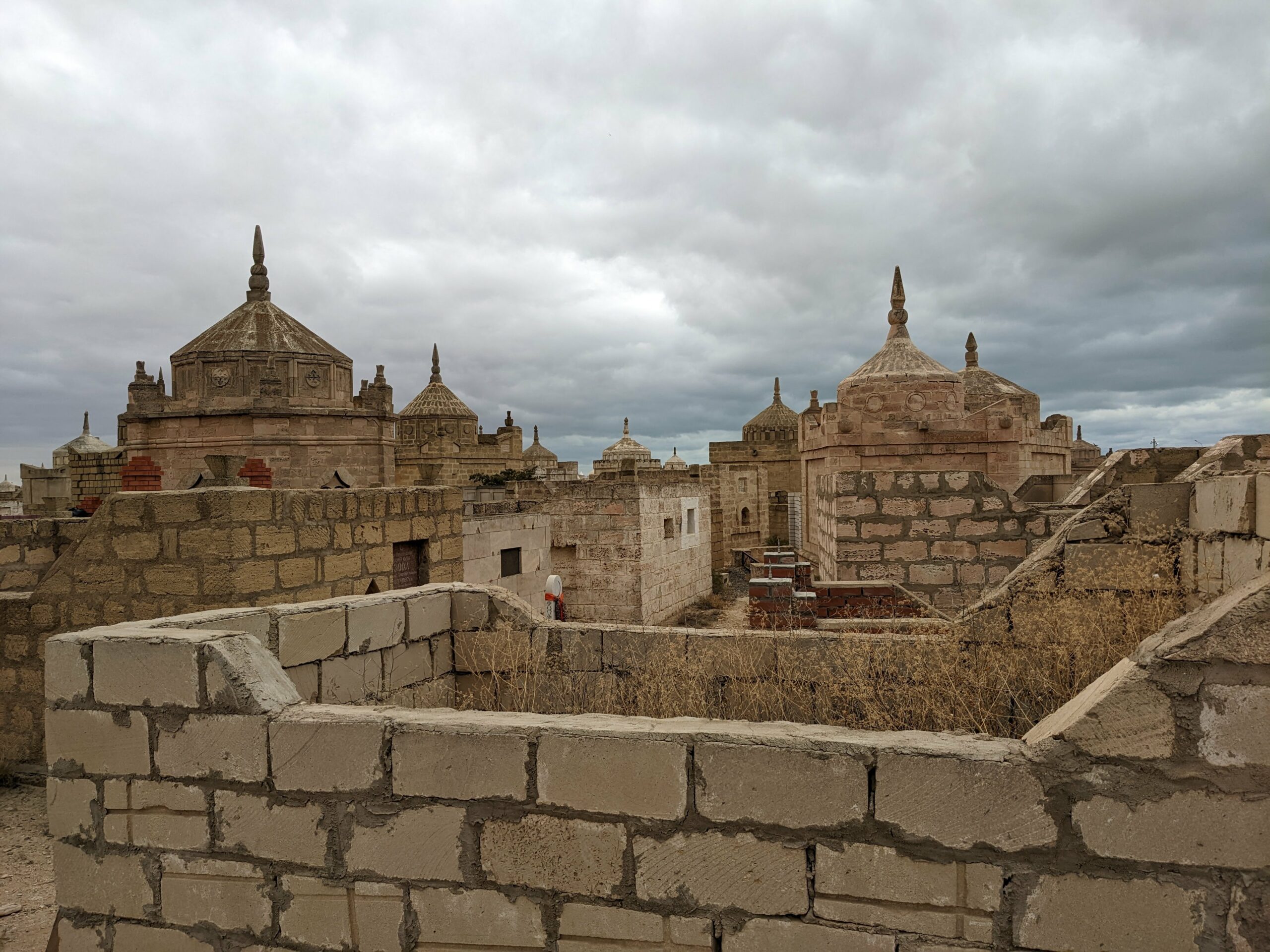
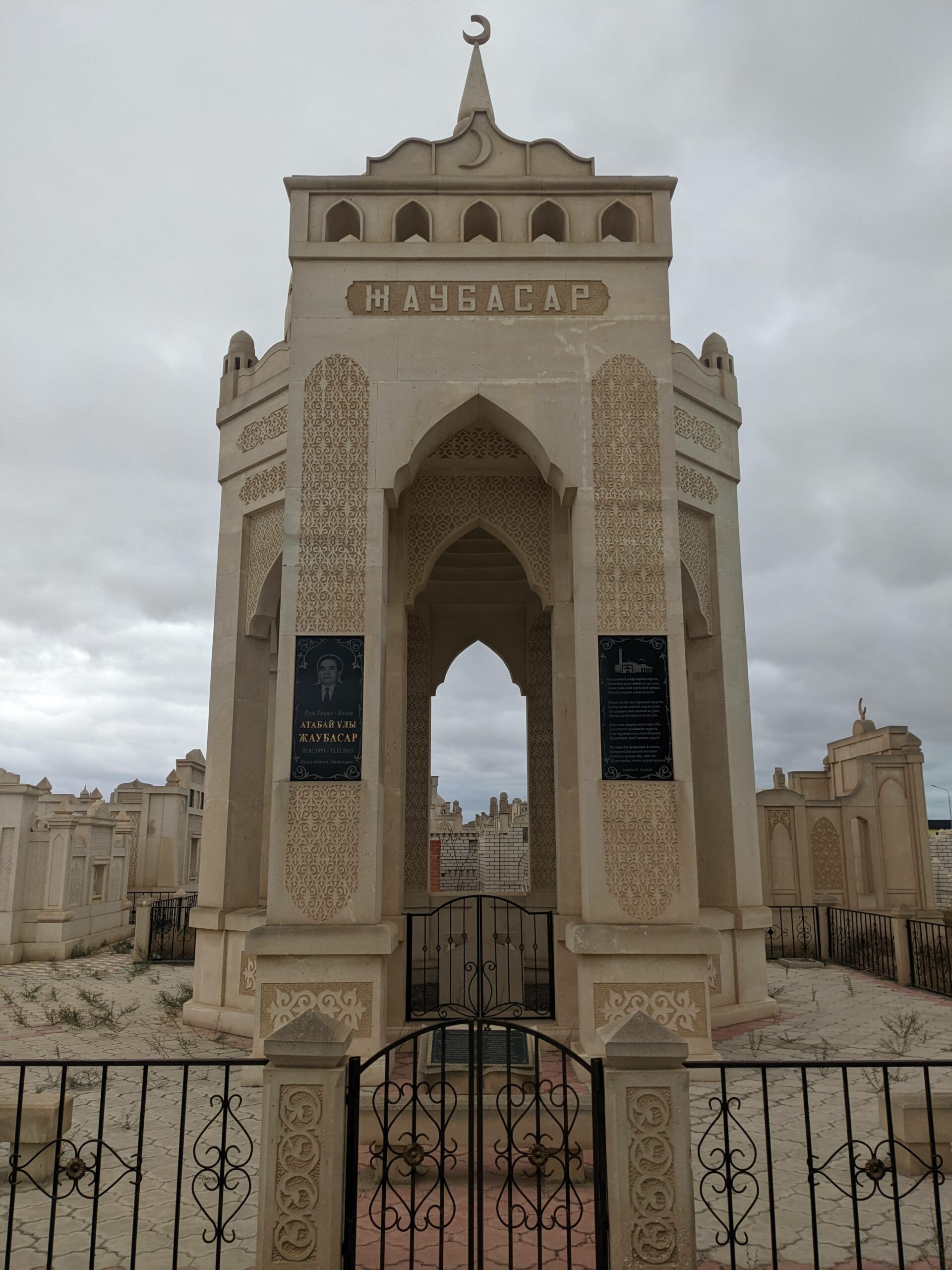
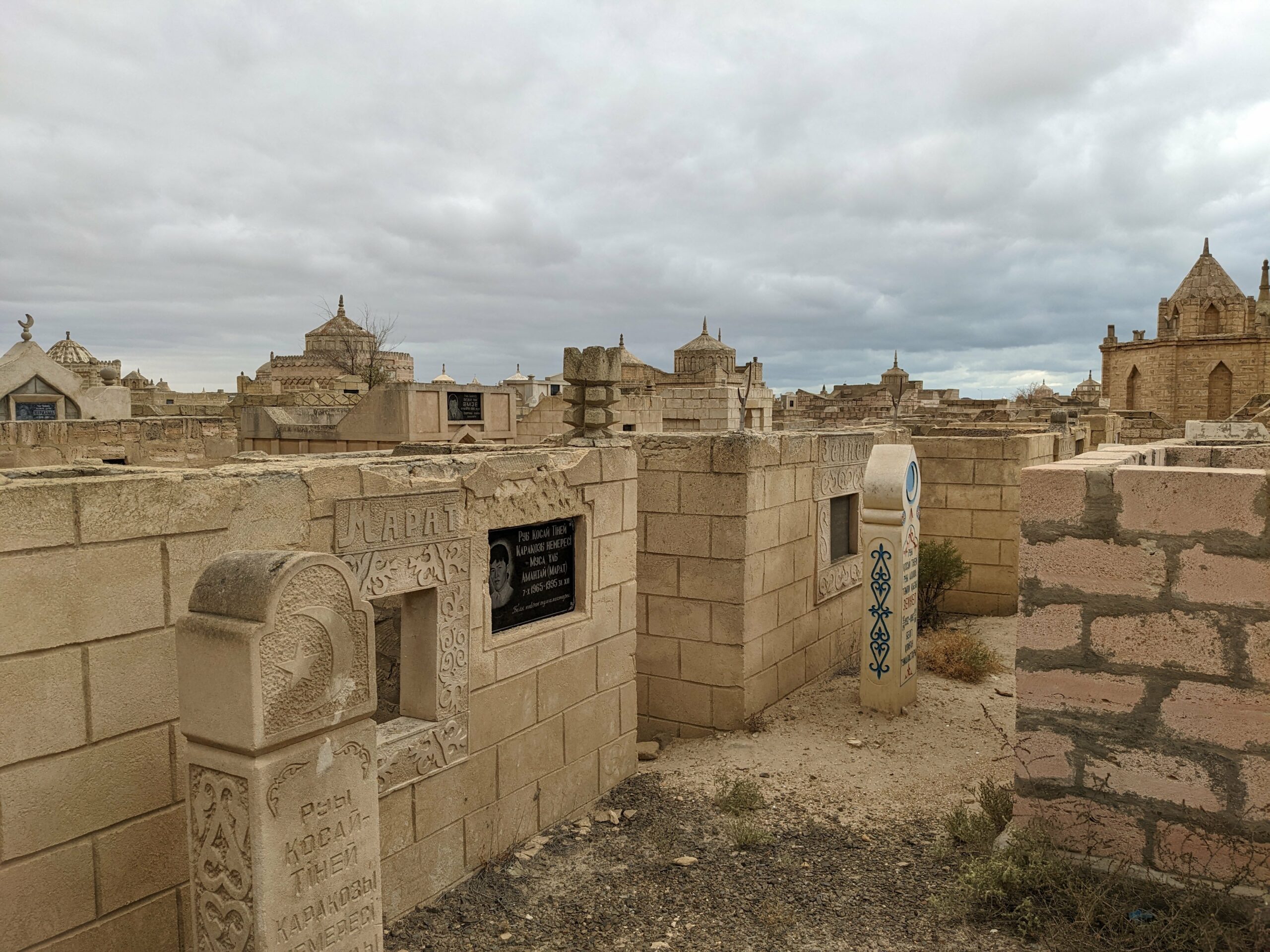
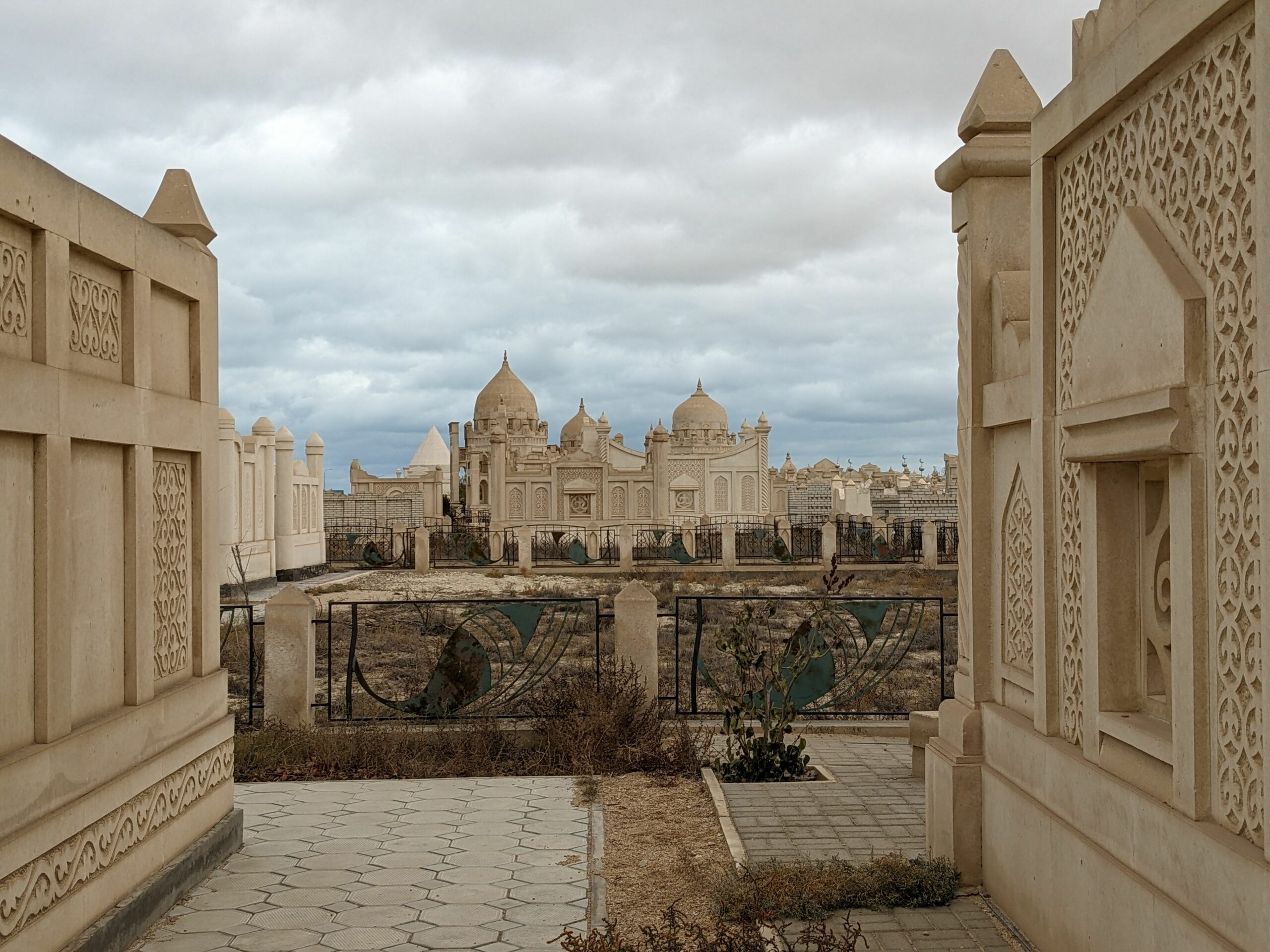


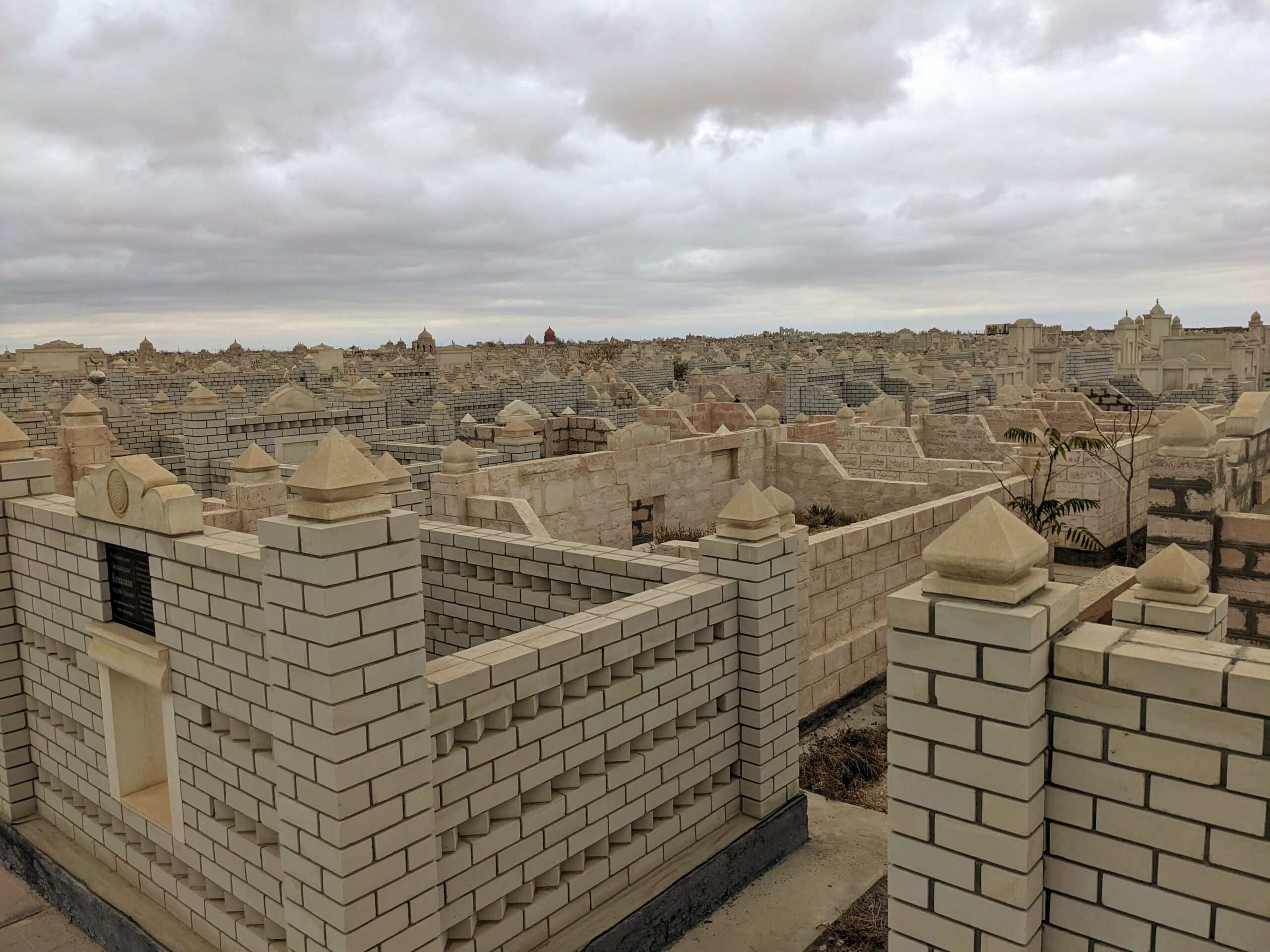
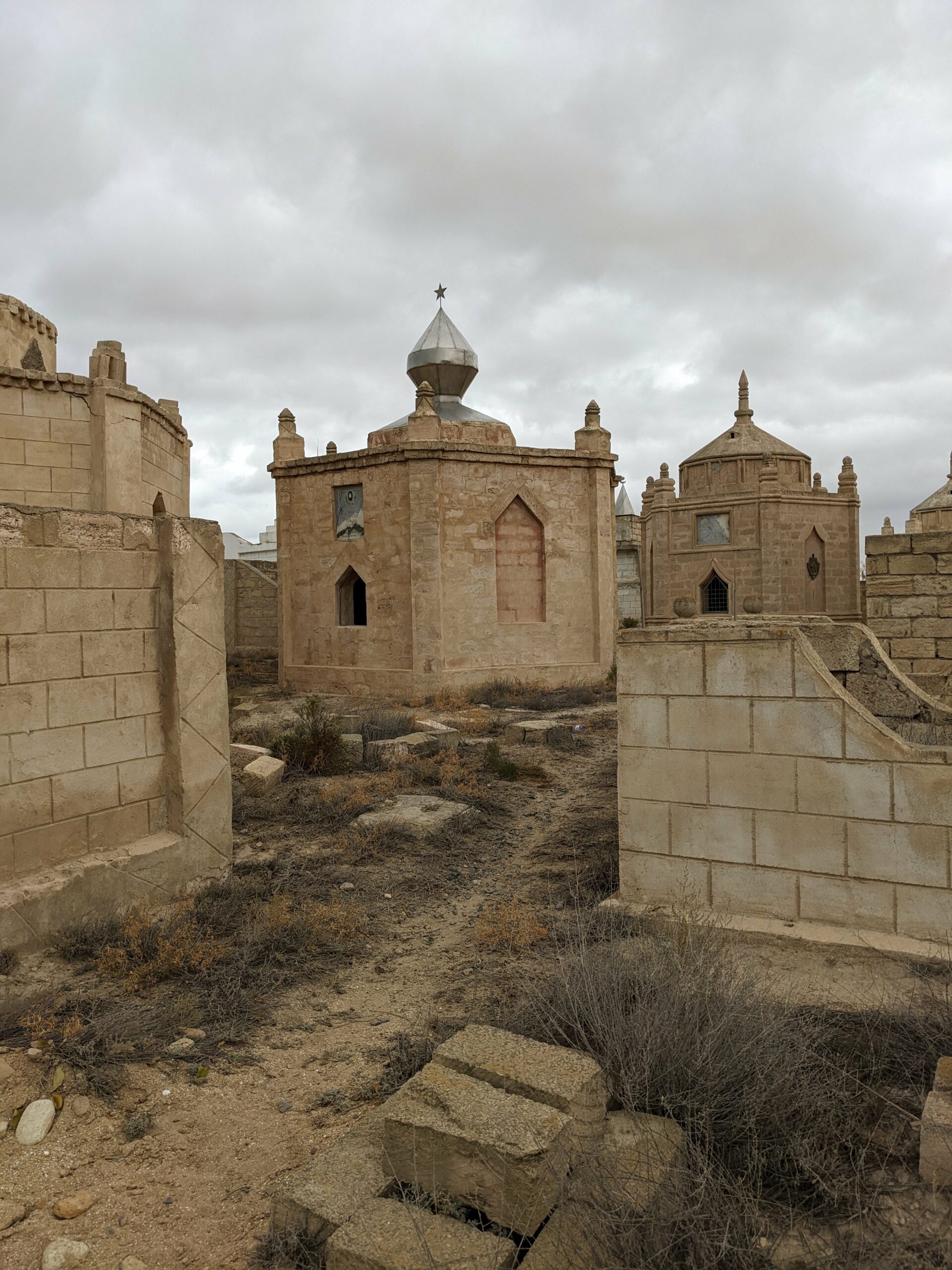
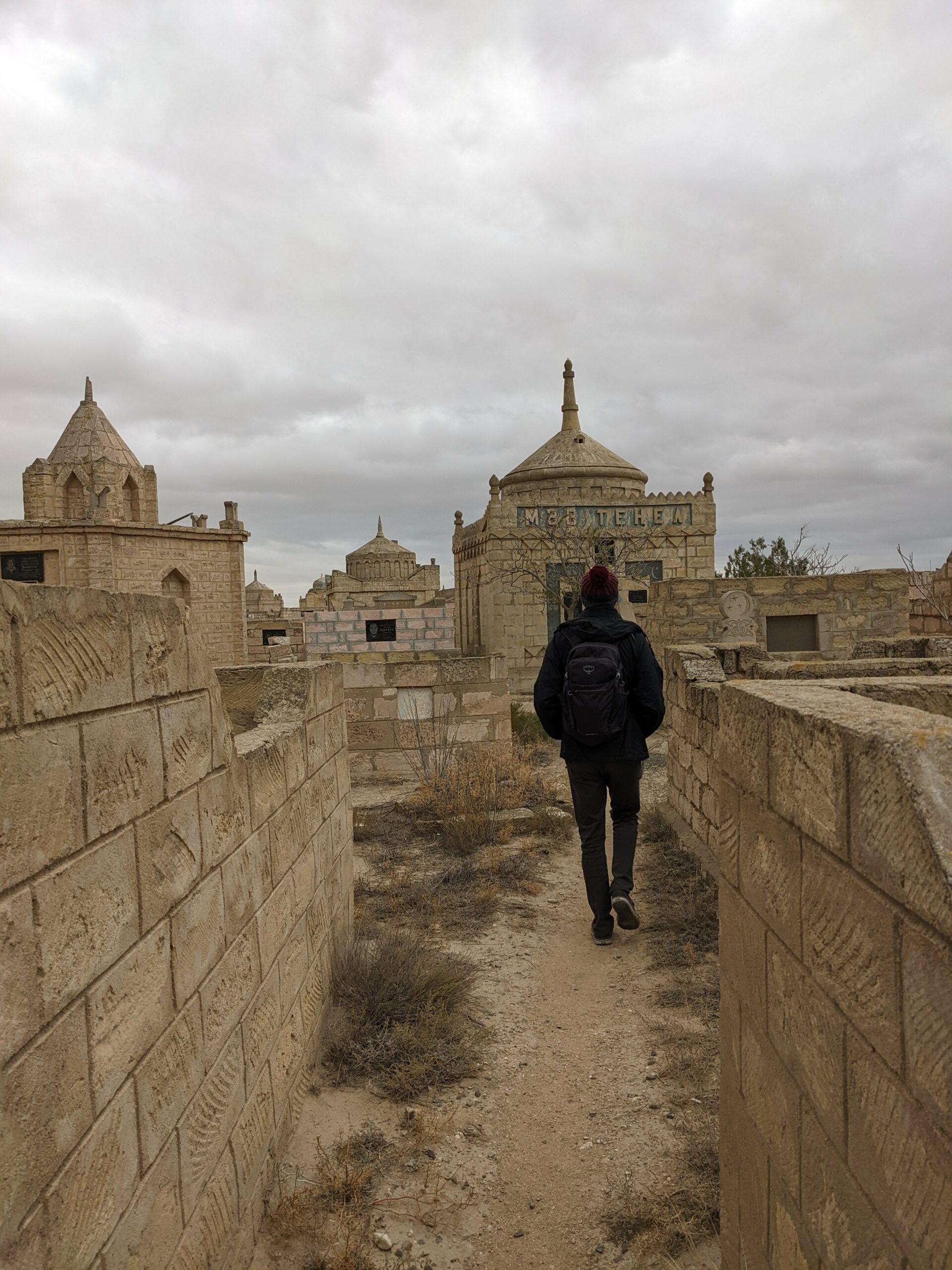
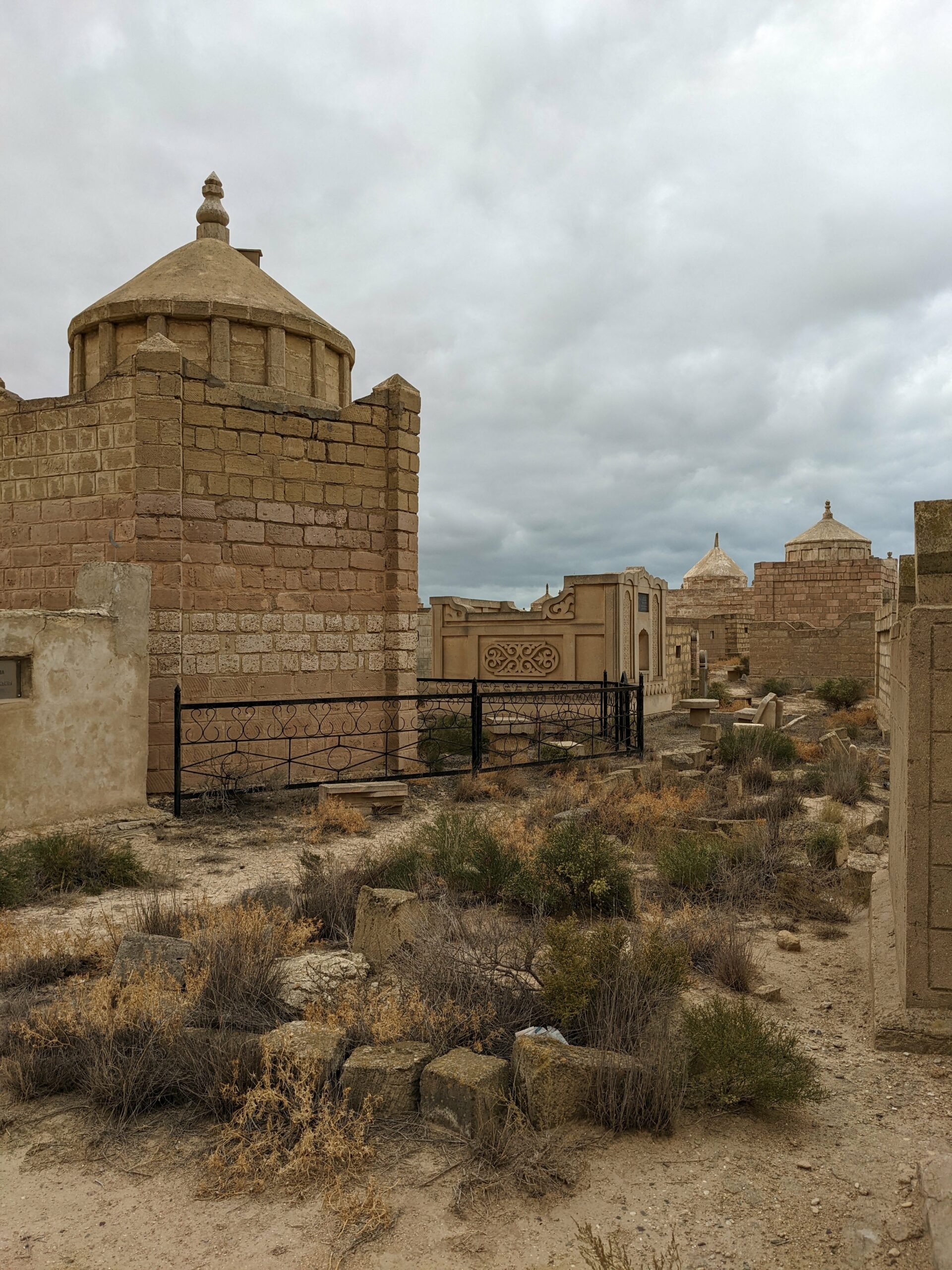
The map is such a bonus, please continue if you can with maps.
All sounds so interesting, the train journey must be one to remember!
Okey dokey, we’ll add maps wherever we can! Yes we won’t forget that train journey in a hurry 😆
Really enjoying the diary of your travels!
Don’t know if your mum told you Sara that Mark and I were in Uzbekistan in May this year. We visited Nukus. Not as bad as LP described! Visit the Savitsky Art Museum. Not long after we left Uzbekistan there were riots in Nukus against the war in Ukraine and some of the demonstrators were shot dead!However we never felt unsafe and we thoroughly enjoyed our stay in this fascinating country
Hi Angie – yes Mum mentioned that you’d visited and loved it. We made it to the Savitsky Museum (the blog is about a week behind – we’re in Bukhara now) and would agree that Nukus wasn’t bad at all! We did read that it had been really spruced up in recent years. Glad to hear you are enjoying the blog!